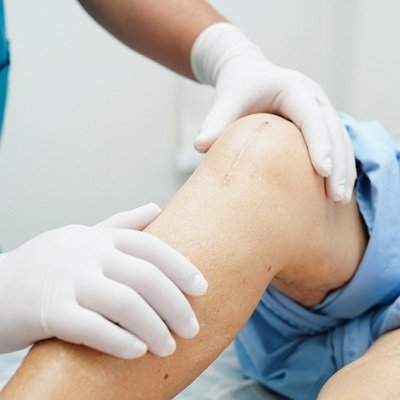Total knee replacement surgery has helped millions of people regain their mobility, reduce chronic joint pain, and return to a better quality of life. However, recovery doesn’t end after surgery. In fact, staying active is one of the most important steps you can take to ensure the long-term success of your new knee.
If you’ve recently undergone or are planning total knee replacement in Islamabad, this blog will guide you through safe ways to stay active, build strength, and avoid complications—allowing you to maintain your independence and enjoy a pain-free lifestyle.
H2: The Importance of Staying Active After Surgery:
Post-surgical activity isn’t just about regaining movement—it’s also essential for:
-
Strengthening muscles that support the knee
-
Improving balance and coordination
-
Maintaining joint flexibility
-
Reducing the risk of blood clots or stiffness
-
Boosting overall mood and energy
Remaining sedentary after surgery can delay your recovery, lead to joint stiffness, and potentially shorten the lifespan of the implant. A consistent and carefully planned activity routine is key to preserving your results.
Week-by-Week Activity Timeline:
Week 1–2: Early Movement:
-
Focus on basic range-of-motion exercises
-
Start short walks with a walker or cane
-
Perform ankle pumps and leg lifts to stimulate circulation
-
Attend physiotherapy sessions if recommended
Week 3–6: Building Strength:
-
Transition to walking without support, if advised
-
Begin stationary cycling with low resistance
-
Practice gentle stretches to improve flexibility
-
Continue strengthening exercises as prescribed by your therapist
Week 7–12: Returning to Normal:
-
Walk independently for longer periods
-
Start low-impact cardio such as swimming or elliptical machines
-
Resume light household chores or shopping
-
Begin more advanced balance and stability training
By the 3- to 6-month mark, most patients feel confident enough to return to daily activities and light recreational sports.
Best Exercises After Knee Replacement:
Not all exercises are suitable after a knee replacement. To avoid damaging the implant, focus on low-impact and joint-friendly activities, including:
Walking:
Walking is excellent for improving circulation and strength. Start with short distances and gradually increase your pace and duration.
Swimming:
Water reduces pressure on the joints, making swimming ideal for aerobic conditioning and joint movement without strain.
Cycling:
A stationary or upright bicycle helps maintain knee flexibility and strengthens the surrounding muscles.
Yoga and Stretching:
Gentle yoga can enhance balance and flexibility but avoid poses that put pressure on the knees or involve kneeling.
Strength Training:
Light resistance training for the legs, glutes, and core helps stabilize the joint and supports long-term implant health.
Activities to Avoid:
While staying active is essential, certain high-impact or strenuous activities should be avoided to prevent wear on your artificial joint. These include:
-
Running or jogging
-
High-impact aerobics
-
Basketball, football, or similar contact sports
-
Heavy lifting or squatting
-
Hiking on rough terrain
Always consult your orthopedic surgeon or physical therapist before attempting any new physical activity.
Tips for Staying Active Safely:
-
Warm up and cool down: Prepare your muscles before any activity and stretch afterward to prevent injury.
-
Use proper footwear: Supportive shoes reduce impact on the knees.
-
Listen to your body: Pain or swelling may indicate you’re pushing too hard.
-
Stay consistent: Aim for daily movement to keep the joint flexible and healthy.
-
Stay hydrated and well-nourished: Recovery also depends on good overall health.
Support for Recovery in Islamabad:
Choosing total knee replacement in Islamabad gives you access not only to experienced orthopedic surgeons but also to quality rehabilitation services. Many hospitals and clinics in the city offer:
-
Personalized physiotherapy programs
-
Post-surgery fitness assessments
-
Patient education for home-based exercises
-
State-of-the-art facilities for recovery and follow-up
With expert guidance and the right post-op care, patients in Islamabad are seeing excellent long-term outcomes from their procedures.
Conclusion:
Staying active after total knee replacement is vital for regaining strength, flexibility, and full use of your joint. With the right mix of low-impact exercises, safe movement practices, and ongoing support, you can enjoy a healthier, more mobile life. Whether you’re in recovery or preparing for total knee replacement in Islamabad, remember—movement is medicine, and an active lifestyle is the best way to protect your investment in a pain-free future.
For more information visit Royal Cosmetic Suregry.







